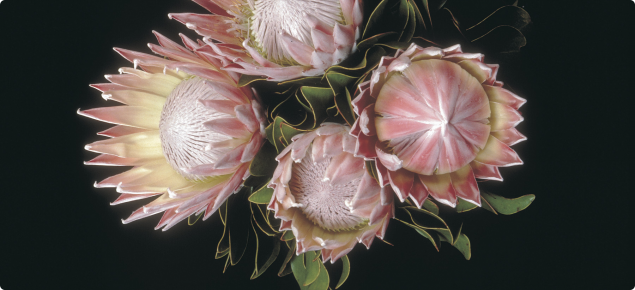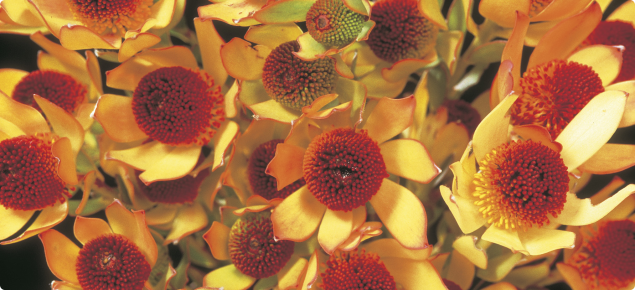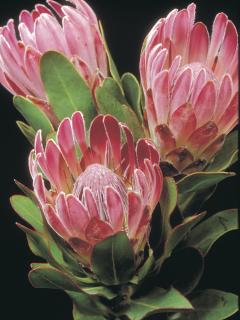Climate
Proteas prefer a mild Mediterranean climate with low humidity. They can tolerate slight frosts, but the young foliage and flowers of some species, such as P. nerifolia and P. cynaroides, may be slightly damaged.
Leucadendrons and leucospermums are generally unaffected by high summer temperatures. Flowering proteas can be damaged by persistent high temperatures, although adequate irrigation can reduce the damage.
Soils
Proteas prefer deep, well drained sand with pH 5.0 to 6.0 for optimum growth and production. Avoid alkaline soils for most species. Proteas prefer a low phosphorus (20 mg/kg soil) site. Test the soil before planting a new area to determine the residual phosphorus level.
Some land preparation is needed. Clear the area three to six months before planting, removing obvious timber and roots and any persistent weeds. Deep ripping, ploughing and cultivating to produce a good tilth are necessary for good plant growth. To minimise the risk of introducing or spreading Phytophthora species, ensure all soil is removed from machinery before use.
Species selection
Flowers and foliage are taken from over 10 Protea species, Leucospermum cordifolium and several Leucadendron species.
Leucadendrons are grown for their attractive foliage and fruiting heads, while proteas, serruria and leucospermums are grown for flowers The most important export species are listed in Table 1. Female forms of Leucadendron species are generally preferred.
| Species | Production period | Approximate yield (stems/mature plant) |
|---|---|---|
| Protea cynaroidesa
| March to January | 10–15 |
| Protea nerifoliaa
| January to September | 30-40 |
| Protea Pink Ice | March to August | 30-40 |
| Protea compacta | May to October | 30-40 |
| Protea repensa | February to July | 40-50 |
| Leucadendron daphnoides | May to July | 30-40 |
| Leucadendron discolorb | July to November | 40-50 |
| Leucadendron galpiniib | September to December | 40-50 |
| Leucadendron gandogeri | July to September | 40-50 |
| Leucadendron laureolumb | May to October | 30-40 |
| Leucadendron salicifoliumb | July to November | 50-70 |
| Leucadendron Silvan Red | December to June | 50-60 |
| Leucospermum cordifoliuma | September to November | 40-50 |
| Serruria florida | May to August | 15-20 |
| a Variants and selections can change flowering time | ||
| b May be harvested as green foliage earlier or later than indicated | ||
To assist in determining the range of species and number of plants to be grown, consult exporters, nurserymen and other experienced individuals or associations. Check out likely returns, market trends and expected demand.
Growing proteas is a long-term investment. The initial selection of species is critical, since substantial product will not be harvested until two or three years (leucadendrons) to three to four years (proteas and leucospermums) after planting. A range of species will minimise reliance on a single species.
Increasingly, named varieties of proteas are based on cuttings from ‘improved’ forms of selected species grown from seed. The only important protea still grown from seed is P. cynaroides.
Most plants are bought as rooted cuttings or seedlings from specialised nurseries.




